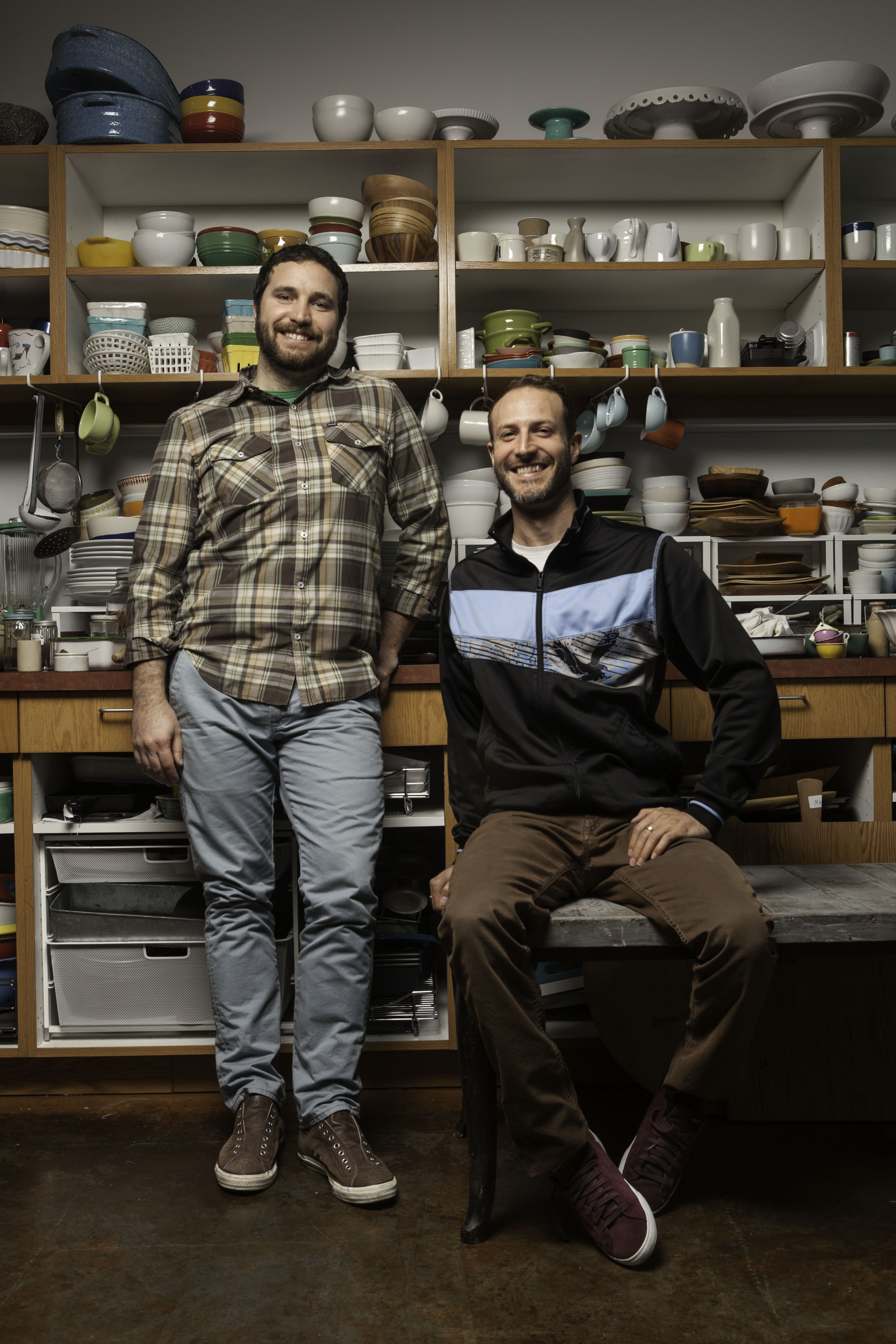Q&A: Is Whole Foods Market spearheading a new form of advertising?


If it weren’t for the fine print, you’d never know the two were connected. On the entire Dark Rye website, the Whole Foods logo is nowhere to be seen.
And yet, Vadan Less, whose team developedDark Rye, says the online magazine does not mean to hide that it’s published by Whole Foods Market.
Launched in March 2012 by Less and his collaborator, Jacob Ellenberg, the online magazine presents stories that are not necessarily about food or products, but use inspirational storytelling to bolster the cultural ideologies of Dark Rye’s parent brand.
Is this the future of advertising? Will more companies invest in original narrative content as an alternative to traditional marketing?
We sat down with Vadan Less, a proponent of the slow media movement, and self-described serial entrepreneur Jacob Ellenberg – who interestingly holds a degree in organizational behavior, narrative theory, and mysticism (!) – to find out.
You’ve described the magazine as using “multi-media storytelling and accessible DIY projects to inspire visitors to pursue their dreams while fostering a more sustainable and creative world.” Could you give me some examples? What do you mean?
Jacob Ellenberg: Individuals in our society today simply adopt the ‘big box store life’ – and that’s fine, there’s nothing wrong with that. But there is a whole cultural movement transpiring of people wanting to create a more sustainable world. And not all these big box stores necessarily do that. Some do, some don’t.
 Within that cultural trend people are actively creating the world they want to live in – whether it’s in the arts, backyard gardening, pickling, or coming up with technologies that are more sustainable. We want to inspire people to pursue that by showing the people who are doing that.
Within that cultural trend people are actively creating the world they want to live in – whether it’s in the arts, backyard gardening, pickling, or coming up with technologies that are more sustainable. We want to inspire people to pursue that by showing the people who are doing that.
Vadan Less: On a personal level, we started finding people doing really cool things in enclaves around the country and now the world. Jacob mentioned rooftop gardening, we also talk about honey making and transforming a pool into an aquaponic system.
We saw that all these disparate pieces had a through-line of conscious creativity. It’s not this lofty ideal. We actually find people who have tangibly set out to change their own life, and conversely change the world around them. Dark Rye is a home for these people.
I’m wondering if you think this moment in media in unique. Could you talk about how you merge corporate and media landscapes? What motivates Whole Foods to publish an online magazine that isn’t directly about food?
Jacob Ellenberg: Certainly traditionally if you are investing money in media as a corporation you are doing it for a direct return on the investment in terms of sales. A lot of corporations are doing that and it’s a viable business model.
But there is something unique happening now – an awakening occurring in terms of the role of corporations in society and their ability to give something back to the communities in which they operate.
We’re not selling potatoes. We’re not selling a particular product. We’re holding up the lifestyle that we value and putting our cultural values into something that is emotionally evocative and compelling.
Vadan Less: In terms of what’s happening with technology and advertising, you have to be relevant to people. Consumers have the ability to skip through things. They can fast forward through commercials. So our opinion is, why not give them something they want and do something that can better the world at the same time?
We don’t like commercials. If I’m on YouTube and a commercial pops up I get frustrated. It’s not an enjoyable way of engaging with a brand. So Whole Foods doesn’t want to create more of that.
From what I’ve heard through the business channels, this is the wave of future advertising. I’m a little loathed to describe Dark Rye as advertising, but at the same time from what I’ve seen in the business journals, conventional advertising is dead.
Could you speak more about that? How do you juggle keeping the brand alive through advertising and pursuing Dark Rye as a passion project? How do you realistically manage those two sides?
Vadan Less: Very easily. The stores sell products, we sell inspiration. I mean, realistically that’s it. Dark Rye is currently not being tasked with being a profit center and there are no plans to make it so. We have the luxury of telling amazing stories.
Whole Foods traditionally had very small marketing budget. While this falls under that, we’re lucky to be able to produce content that’s relevant to people.
Does that mean the marketing budget just got a lot higher but it’s moving toward producing content like Dark Rye?
Vadan Less: We want to tell the Whole Foods Market story and we believe Dark Rye is part of that. And so it hasn’t increased the budget at all. We can do a surprising amount of production in-house and the cost is very low. If you look at our cost producing Dark Rye and you compare it to other company’s campaigns, it’s a drop in the bucket.
We have a tremendous amount of creative license. Lots of people are willing to work with us for not very much money because it’s become like a collective passion project.
Jacob Ellenberg: And to be entirely transparent, when we come across a supplier of Whole Foods who’s really interesting, we’ll include them. For example we recently did a piece on the Brooklyn Brew Shop – a couple in Brooklyn who make Brew Kits.
We don’t want it to become an advertisement, but we will sometimes re-purpose that material and put it on another channel, for example Whole Foods Twitter Account or Whole Foods Facebook.
Companies are trying to find new and more authentic ways to talk about themselves. And this is something I wanted to talk to you guys about. How are companies going to do this?
Vadan Less: For years we told supplier stories; ranchers doing amazing things, fisheries changing the world, farmers completely revamping organic structures in their cities. But they weren’t relevant to a lot of people. Consumers are just not googling “How are fisheries changing the world?” So we felt we had to tell those inspired stories on a different level – focus them down to people.
Jacob Ellenberg: Whole Foods does not do traditional advertising. I shouldn’t say it doesn’t, it does a little here and there, but the budget is so small. We can’t go do big ad buys - that’s not even in the ballpark. So Dark Rye is an innovation in the field trying to answer the question: “How can we communicate in a relevant way with a small budget?
Whole Foods is a huge, successful company. Why is the marketing budget so small?
Jacob Ellenberg: We ask that all the time! Great question. The real answer is it started off as a one-shop company and it didn’t have money to advertise.
Vadan Less: A big part of our organizational structure is localization. It makes it very difficult for us to talk about numbers or specific products because some stores don’t carry the same products as other stories. There are challenges that come with that, but the localized platform allows a much more efficient and wonderful shopping experience –
Jacob Ellenberg: – and locally relevant. When it’s not a top down model the stores know what their local community has to sell and wants to buy.
If you imagine the magazine five years from now, what do you see?
Vadan Less: We anticipate building a more robust contributor base. It’s logical to say that with this expansion there will be a social or community component added to our model, but there is no timeline for this yet.
Jacob Ellenberg If we’re talking in terms of fantasy, other contributors will also be providing original content that is inspiring people to pursue all sorts of DIY stuff. Then hopefully it will become a user community that is a community of practice.
This post was originally published on Smartplanet.com


